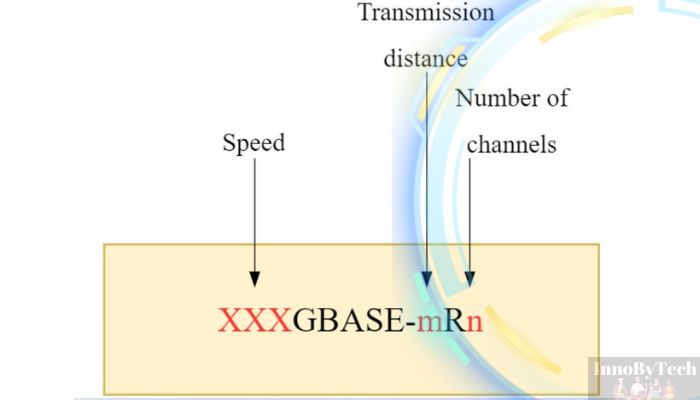A Brief Discussion on 100G Optical Modules in Data Centers
Traditional data centers are mainly based on a 10G network architecture. In order to adapt to the large-scale deployment of services such as AI, deep learning, and big data computing, the next-generation data center architecture is evolving towards 25G/100G network architecture. In China, Internet giants such as BAT have already achieved large-scale deployment.
Building a 25G/100G data center requires a large number of 100G optical modules, which account for a high proportion of the network construction cost. What are the 100G optical module standards and how should we choose? Today, we will briefly sort out the 100G optical module standards and packaging formats for data centers.
100G optical module standard organization

Before we start sharing the optical module standards, let’s first understand the standardization organizations of optical modules. The definition of optical modules is mainly based on two key organizations, namely IEEE and MSA (Multi Source Agreement), which complement and learn from each other.
Everyone knows that IEEE is the Institute of Electrical and Electronics Engineers, and 802.3 is a working group under IEEE. Many 10G, 40G, 100G, and 400G optical module standards are proposed by the IEEE 802.3 working group.
MSA is a multi-vendor specification. Compared with IEEE, it is a non-official organization. Different MSA protocols will be formed for different optical module standards, which can be understood as the behavior of the industry’s corporate alliance. In addition to defining the structural packaging of optical modules (including external dimensions, electrical connectors, pin assignments, etc.), MSA also defines electrical interfaces and optical interfaces, thus forming a complete optical module standard.
A long time ago, the optical module industry chain was very chaotic. Each manufacturer had its structural packaging, and the optical modules they developed were large and small, and the interfaces were also varied. In order to solve this problem, the MSA multi-source agreement came into being. All manufacturers followed the standards proposed by MSA to unify the structural packaging and related interfaces of optical modules, like the standardization of mobile phone charging ports. For 100G, the standards defined by MSA include 100G PSM4 MSA, 100G CWDM4 MSA, and 100G Lambda MSA.
100G Optical Module Standards

100G interconnection scenarios of different distances, IEEE and MSA have defined more than ten 100G standards, but the mainstream ones are the following six standards.
| Standard | Formulating bodies | Connector | Type of fiber | Transmission distance |
| 100GBASE SR10 | IEEE 802.3 | 24core MPO, 10 transmitter and 10 receiver | Multimode fiber, 850 nm | OM3 100M
OM4 150m |
| 100GBASE-SR4 | IEEE 802.3 | 12-core MPO, 4 transmitter and 4 receiver | Multimode fiber, 850 nm | OM4 100m |
| 100GBASE-LR4 | IEEE 802.3 | Duplex Lc, 1 transmitter and 1 receiver | single mode fiber 1295.56~1309.14nm | 10KM |
| 100GBASE-ER4 | IEEE 802.3 | Duplex LC, 1 transmitter and 1receiver | single mode fiber 1295.56~1309.14nm | 40KM |
| 100G PSM4 | MSA | 12-core MPO, 4 transmitter and 4receiver | single mode fiber 1310nm | 500m |
| 100G CWDM4 | MSA | Duplex LC, 1 transmitter and 1 receiver | single mode fiber 1271nm-1331nm | 2KM |
▲ Table 1- Mainstream standards for 100G optical modules
The standards starting with 100GBASE are all proposed by IEEE 802.3.
▲FIG-1
As shown in the figure above: In 100GBASE-LR4, LR stands for long reach, i.e. 10 km, and 4 stands for four channels, i.e. 4*25G, which together form a 100G optical module that can transmit 10 km.
The naming convention for – R is as follows:
| PMD Type | Transmission distance | Remarks |
| KR | Tens of centimeters | k, backplane, signal transmission between backplanes |
| CR | A few meters | C, copper, coaxial cable connection |
| SR | Tens of meters | S,short, Short distance, high-speed optical modules generally use multimode optical fibers |
| DR | 500 m | D,
Note: PSM4 has a transmission range of 500 meters, but it does not belong to the IEEE standard system |
| FR | 2 km | F,
Note: 100 G CWD4 is also 2 km, but it is not an IEEE standard, it is defined by the MSA. |
| LR | 10 km | L, long, long distance |
| ER | 40 km | E, extended distance, extended relative to LR |
| ZR | 80 km | Non IEEE Standard |
▲ Table 2- R Glossary (Noun Explanation)
In addition to the 100GBASE series standards proposed by IEEE, why did MSA propose the PSM4 and CWDM4 standards?
100GBASE-SR4 and 100GBASE-LR4 are defined by IEEE Commonly used 100G interface specifications. However, for the internal interconnection scenarios of large data centers, the distance supported by 100GBASE-SR4 is too short to meet all interconnection requirements, while the cost of 100GBASE-LR4 is too high. Therefore, MSA brought medium-distance interconnection solutions to the market, and PSM4 and CWDM4 are the products of this revolution.
Of course, the capabilities of 100GBASE-LR4 completely cover CWDM4, but in the 2km transmission scenario, the CWDM4 solution is lower in cost and more competitive.
See more detail from: https://www.ruijienetworks.com/support/tech-gallery/100g-optical-modules






